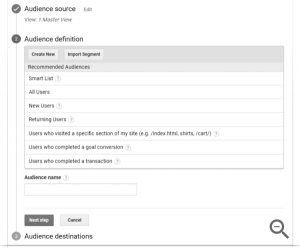— June 21, 2019

The use of AI-driven technologies, such as machine learning, predictive analytics, and natural language processing, is changing how work is done.
In particular, automation is widely adopted in many industries and disciplines. It’s changing the dynamics of the workforce and impacting businesses of all sizes. According to McKinsey, about half of the activities (not jobs) carried out by workers could be automated.
This means that most workers, regardless of industry or seniority, will be working alongside rapidly evolving machines, which will change the nature and functions of many jobs.
With its lowering cost, automation is no longer the domain of large corporations. As a small business, you’ll be impacted by automation and your ability to adapt will affect the success of your company in the long run.
How Small Businesses Can Prepare For Automation
Here’s how to get your business ready for automation so you can make the most of the latest technologies:
Focus On Your Customers
As automation technologies take over manual tasks and repetitive work involved in the day-to-day operation of your business, resources can be freed up to focus on delivering high value-add services to your customers so you can build trust and foster relationships.
In fact, 86% of customers are willing to pay more for a better experience. The ability to deliver an outstanding customer experience will be the key to success for businesses of any size.
While automation can streamline customer care (e.g., chatbots,) it’s not going to replace human interactions in delivering a personal experience that will ultimately improve customer retention and increase customer lifetime value.
Shift To Strategic And Creative Work
With automation replacing many manual and repetitive tasks, the nature of work will become more strategic and creative in nature. This will, in turn, change the focus we put on training and hiring.
Also, we need to redefine “productivity” and the associated KPIs so we can measure outcomes that are less tangible and quantifiable in nature yet will have immense long-term impact on the success of a business.
In addition, many new occupations that don’t exist today will emerge and may account for as many as 10% of all the jobs created in the next decade. More organizations are hiring based on job functions and outcomes, rather than just going by job titles or filling blanks in an org chart.
Provide Employee Training
As the nature of work changes, you need to provide the appropriate training so employees can work alongside automation technologies effectively and adapt to new roles.
Some employees will be displaced by automation technologies. Instead of laying them off, you can retrain them to operate, monitor, maintain, and repair the automated systems.
You can also reallocate these employees to creative and strategic tasks within the organization so you can leverage their experience and institutional knowledge to enhance the effectiveness of the automation technologies.
Gather Accurate Data

Data is the key to successfully leveraging many AI-driven technologies, especially those that use analytics and pattern recognition. Without high-quality data as input, you won’t be able to gain accurate insights or generate meaningful outcomes.
Besides using information from your own database, you can leverage business intelligence and big data from other sources to inform data-driven decision-making.
To optimize many automation technologies, it’s important to gather accurate information in real-time, “cleaning” the data before it’s used, and deploying the right algorithms for your analytics.
Enhance Data Security
While the use of data is essential for many automation functions, it’s also important that you have the right cybersecurity measures in place to safeguard customer information since the cost of data breaches is skyrocketing.
A data breach will not only have immediate cost implication (e.g., recovering lost data, providing identity theft protection to affected customers, penalties for non-compliance) but also have long-term impacts such as eroded trust, damaged reputation, and loss of repeat customers.
Staying compliant with various industry standards can put a lot of pressure on small businesses. The use of cloud computing platforms, which offer many security features, is allowing small businesses to tap into the power of data at an affordable cost.
Redesign Workflows
Small and medium enterprises are expected to adopt business workflow automation on a large scale.
Automation eliminates bottlenecks to improve operational efficiency. To optimize the results, you should re-evaluate and redesign your workflows to enhance how employees work alongside these technologies.
To prioritize your efforts, identify workflows that are most inefficient. For example, processes that involve multiple parties, consist of many manual and repetitive tasks, have significant compliance risk, involve complicated steps, or are prone to human errors are good candidates for automation.
In addition, you need to provide the appropriate training to your employees so they can adopt the new workflows and leverage automation effectively to enhance their productivity in areas that matter most.
Identify KPIs
You’ll be investing time, money, and resources to implement automation so make sure that these technologies are yielding satisfactory ROI for your business.
Identify KPIs that indicate the successful use of automation technologies, especially in areas that are the most inefficient at the moment. Benchmark current metrics and set goals so you can measure success and fine-tune the processes.
Some KPIs for measuring the effectiveness of automation include cost savings from preventing human errors in repetitive processes or time saved by reps with the use of automation in customer support.
Attract And Retain Talent
As automation takes hold, the need for creative and strategic workers will increase. The ability to hire and retain high-quality talent will be more important than ever for the success of any organization.
The shift to strategic and creative work means employees are holding more institutional knowledge so the cost of employee turnover for these jobs is higher compared to those executing manual and repetitive tasks.
Build an employee-led organization that focuses on the individual and make sure that work is meaningful and satisfying to reduce churn. Design a seamless candidate experience, a comprehensive onboarding process, and an outstanding employee experience to attract talent and reduce the cost associated with employee turnover.
Explore New Opportunities
With the deployment and development of automation technologies, new opportunities are opening up for many businesses.
While automation is changing how work is done in many sectors, those that involve healthcare, infrastructure and buildings, renewable energy, energy efficiency, climate adaptation, and the “marketization” of previously unpaid domestic work are predicted to experience the most growth in the next decade.
Automation will allow small businesses to expand into and become competitive in these industries. Those that can leverage technologies creatively will gain market share and experience significant growth.
Final Thoughts
Automation will no doubt affect how businesses are run and how work is done in the next decade. As a small business, you have the advantage of being nimble and responsive to these changes so you can leverage the opportunities for growth and expansion.
To take advantage of these new technologies, switch your focus from the performance of manual or repetitive tasks to strategic and creative thinking.
This will require some fundamental changes in your company’s culture, processes, and priorities. You’ll need to analyze and redesign workflows and provide employees with the right training so they can adapt and thrive.
However, adopting automation technologies will allow you to become more innovative and cost-efficient. It’ll help you stay ahead of the curve and experience growth in today’s fast-paced business environment.
Business & Finance Articles on Business 2 Community
(70)






